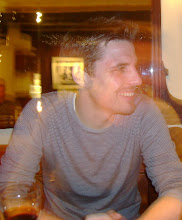The simplest ideas often make the greatest stories. This is certainly true in Italo Calvino’s ‘Castle of Crossed Destinies’. The short novel opens with a wanderer in a forest, tired and hungry. Coming across a castle he enters hoping for food and board for the night. Inside the great hall are many other travellers. After eating he feels the need to transmit his story, he opens his mouth to speak but cannot. In fact all of the visitors to the castle have been struck dumb. At this point the master of the castle comes over with a deck of tarot cards and places them on the table. Each of the visitors then uses the tarot cards to tell their story. Each card duplicated representing a different meaning for each person who places it.
Tarot cards first appeared in Italy in the early 15th century where they were used as part of a card game. Since then they have become soaked with ideas of spirituality and divination so that today they are better known through the process of tarot readings. An individual uses the cards in order to gain an insight into a current problem or into their future. Calvino‘s book works in a similar way. The meaning of each card is not fixed; rather it changes, according to the person and situation they find themselves in. A card has a different meaning to the same person in response to different questions just as each card meant something different to each traveller who placed it down in the castle of crossed destines.
The use of tarot cards to tell the future or to help someone with a problem has always seemed to me to be connected with the modern process of dream analysis in psychotherapy. Here each image taken from a dream has a different meaning, or indeed can have several meanings. In order to understand a dream someone undergoing the process writes down each fragment or image they remember from a dream. Then they describe and try to understand any association that results from each fragment. What the image means to them is much more important than what the image actually is. The final part of the process is to discover the links between these associations, to find the underlying ‘meaning’ of the dream.
The process of concentrating on the associations rather than the images themselves is not and unusual process. After all we do exactly the same thing in creating ourselves from our memories. We each remember certain events in our lives, experiences. Is it these experiences that make up who we are and how we act? I don’t think so. I think it is the story that we make up in-between the memories that creates the person we are today. We don’t decide to act differently in-between two memories, yet we often do react differently. Looking back on it we see the disparity between the two actions and so make up a story to explain how we changed. We have these experiences in our minds and place them down in a sequence in order to explain how we got here, just like the tarot cards in Calvino’s story. What the memory actually is is not as important as the story we tell from one experience to the next. The spaces in-between are where the story of our self is constructed.
Sphere: Related Content
15 years ago




